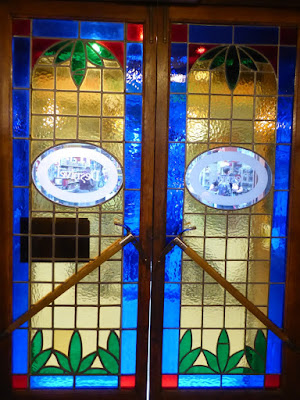For some years, we have kidded about doing The Way, the
Camino Santiago, or some suitable stretch of it. Not that we are, um, particularly devout, nor that we have some vow to keep. The Camino is very old,
muy famoso, many trails, many variants, many sites, in France and Spain, and Portugal, all ending at the tomb of St. James, in Santiago de Compostela, in Galicia, northwest Spain. (We were there in 2010; see
http://roadeveron.blogspot.com.es/2010/01/santiago-de-compostuela.html for enlightened commentary). We like treks, especially if the scenery is good or if they are historic. And especially if there are refuges or huts or pilgrim hostels along the way and
auberges and
ristorantes and cafes and wine bars
so you don't have to carry a heavy pack. Or if other fun seems likely or you even get a
compostela or maybe even a plenary indulgence
for your trouble. We have (inadvertently) driven much of the French version, especially as it crosses Spain, and were thrilled to learn that there is a somewhat less crowded, much more scenic version, the
Portuguese Way. Better yet, it is known as the
easy version of The Way. So we have resolved to become Pilgrims, at least for a week or so in June, and consequently have been looking for the authoritative (and in English, too) guide book,
A Pilgrim's Guide to the Camino Portugues, 8th edition, by John Brierly. The publisher and then his distributor for Spain directed us to bookstores in Madrid, the most interesting of which, by far, was Libreria de Montana, not far from the Prado. Alas, they had only the 7th edition, published in 2016, not nearly good enough for us serious prospective Pilgrims. But just seeing the store was an extraordinary treat.
 |
| Libreria de Montana, which made us a little homesick |
 |
Modernista with ice axes...we're going to like
this place |
 |
| Books in the window |
 |
| Window dressing |
 |
| A mountaineering bivouac sack for reading |
 |
| Ice axe post |
 |
Clocks showing times at the world's major summits; note grill
work too |
 |
| Thousands of titles of travel books, some in English, too |
 |
| Incredible place; we're getting to like Madrid more and more |





















































